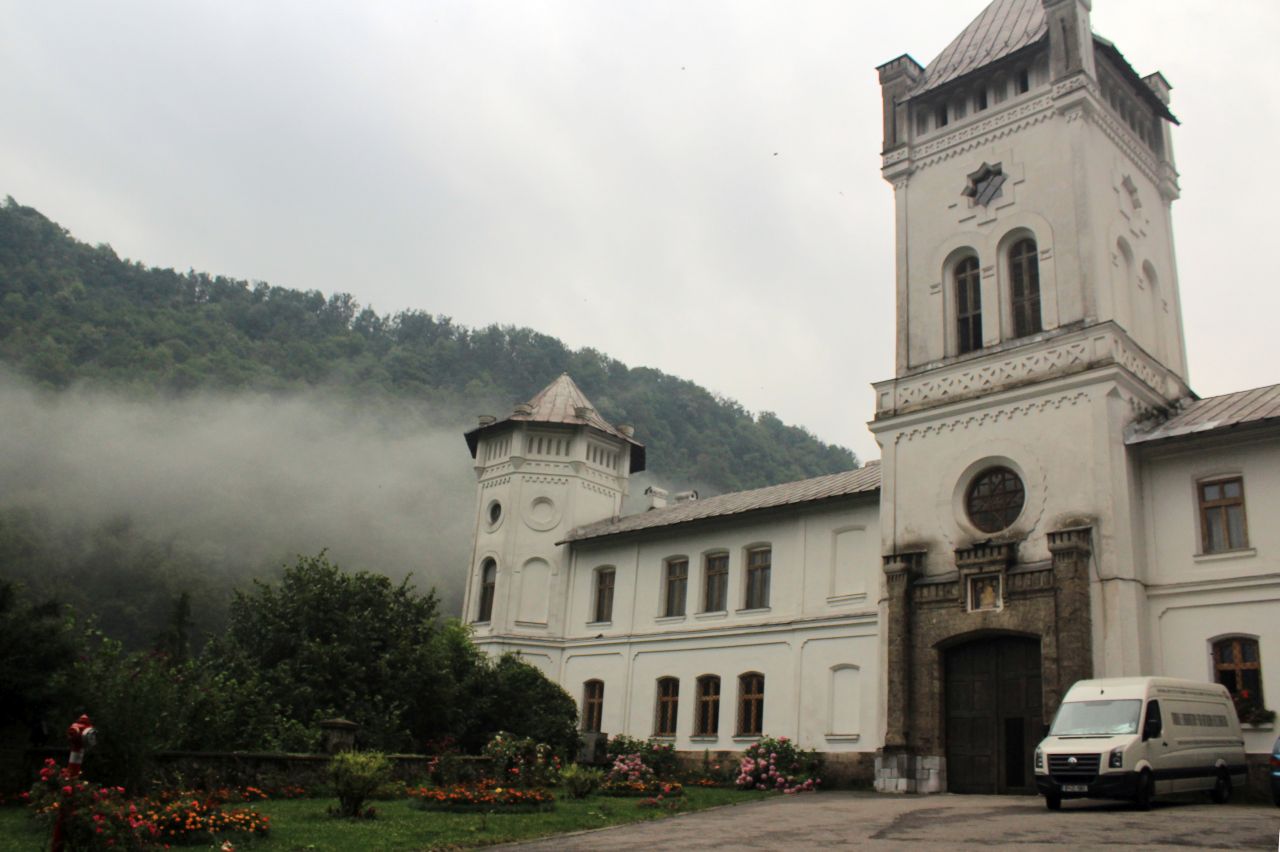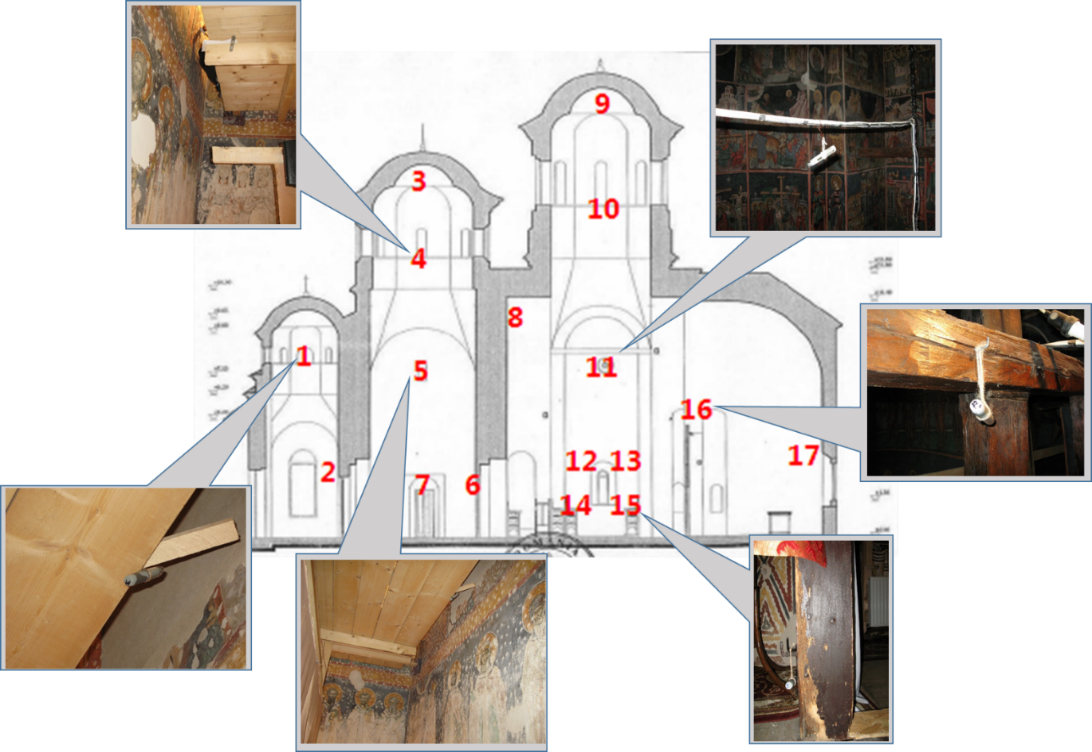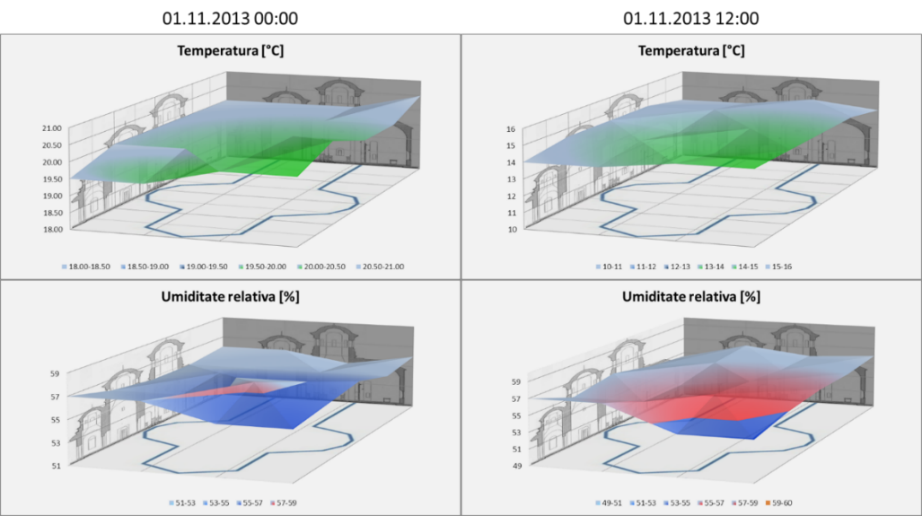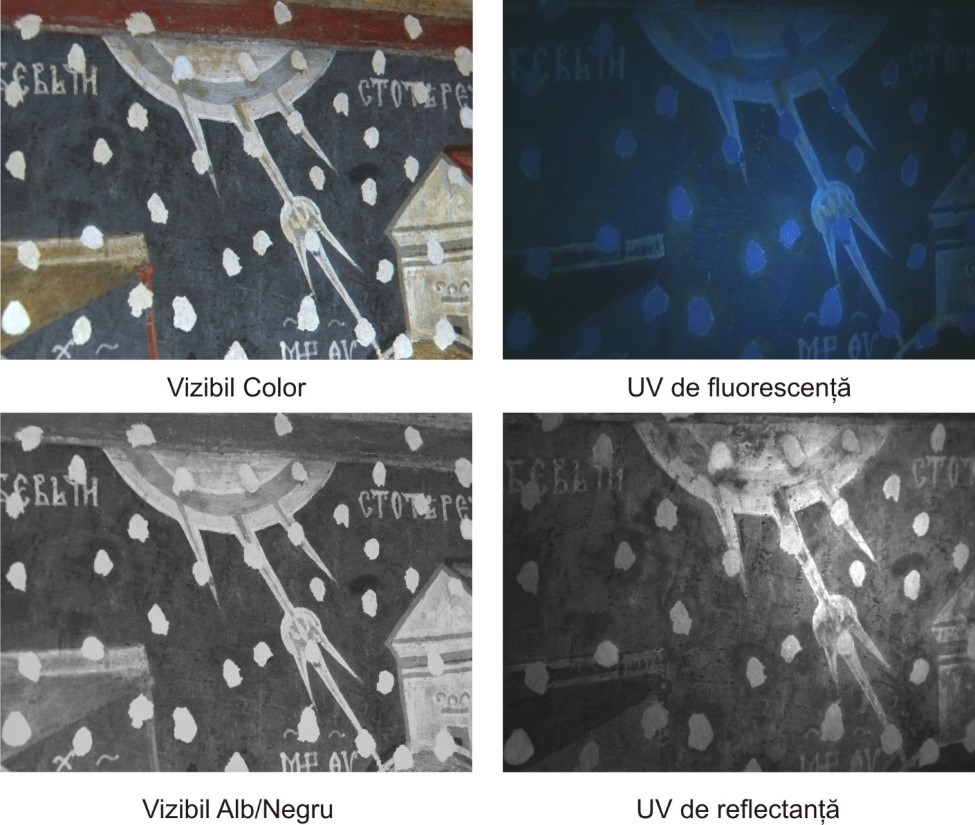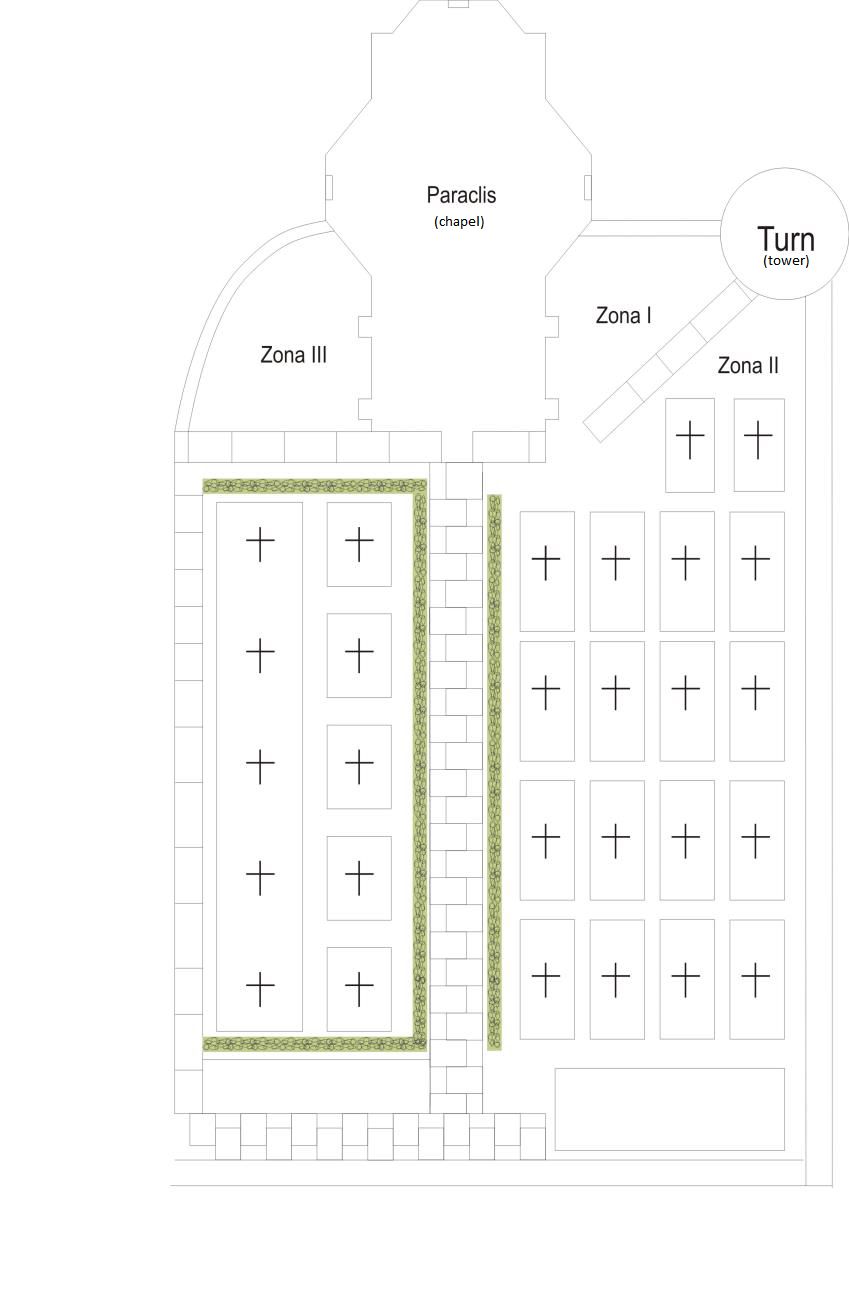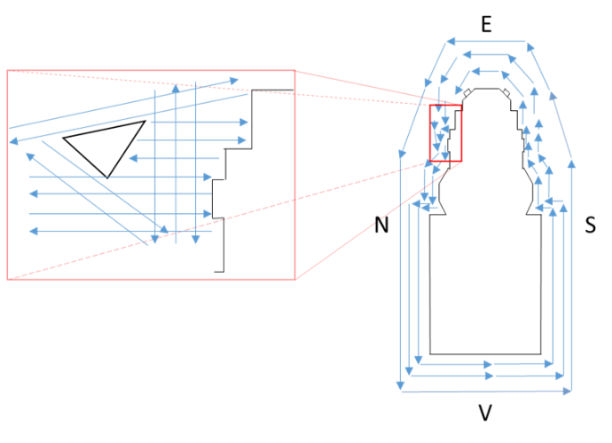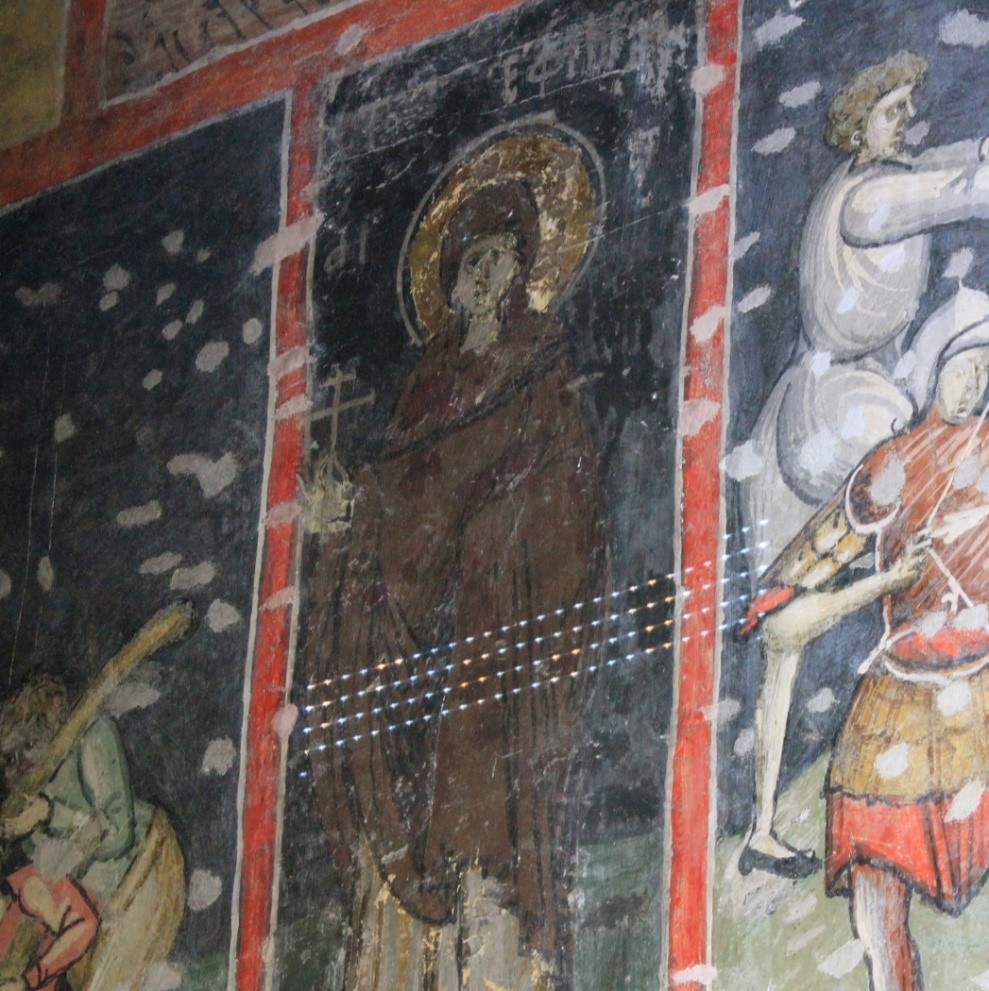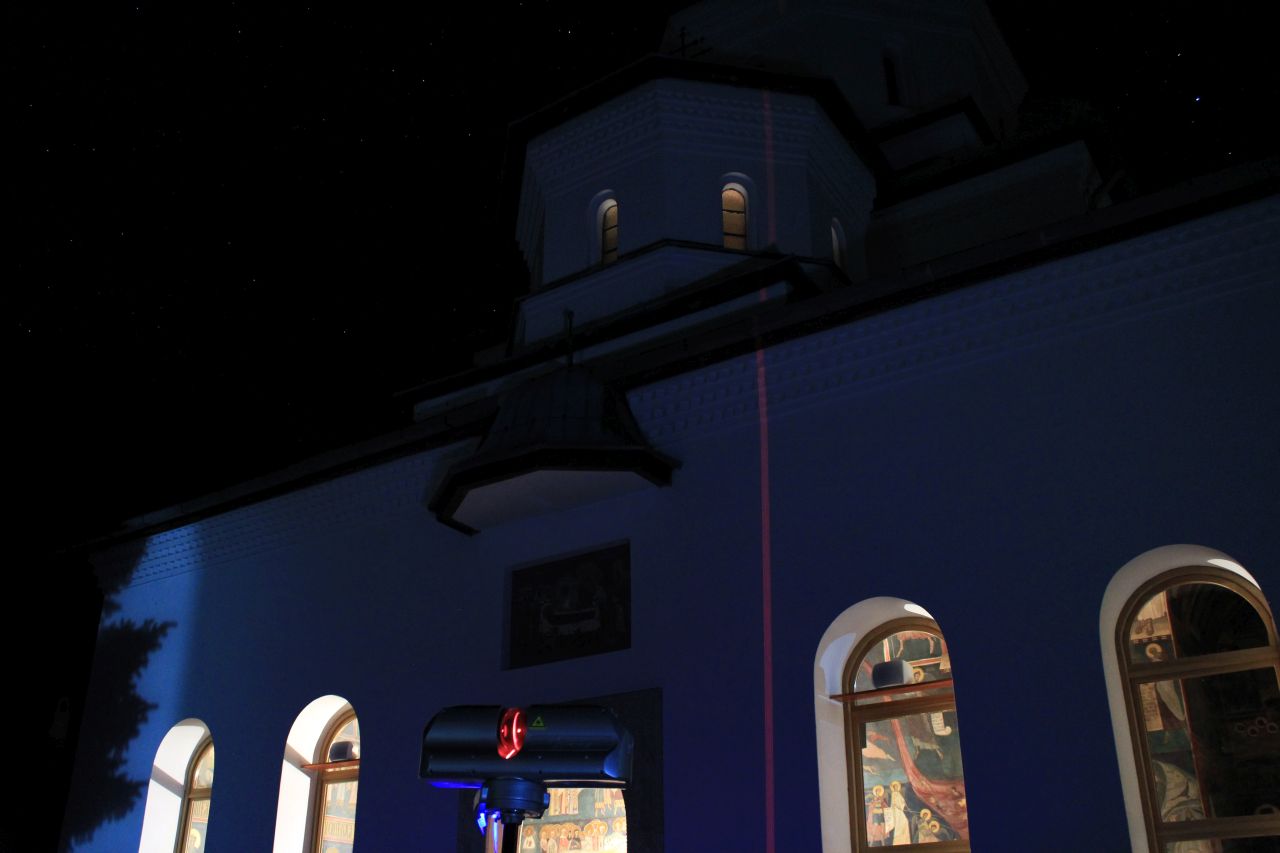Program Partenerships in prioritary domains
Code: PN-II-PT-PCCA-2011-3.2-0356 . Read More
Multidisciplinary campaign on-site assisted online
This campaign was organized for two weeks long at the Tismana Monastery "Adormirea Maicii Domnului", Gorj County, Romania, in July. The research team from INOE 2000 went there with the mobile laboratory ART4ART. The main purpose was to work with a young restoreres team in order to exchange experience but especially to train them with the modern techniques that are currently used world-wide in the conservation-restaration field.
Micro-climate monitoring
If you cannot play this movie, please use Chrome or Firefox browsers.The campaign was organized at the Tismana Monastery according to the working mode proposed by the researchers group from INOE 2000, that emphasizes the fact that any campaign should start with the monitoring of the micro-climate conditions and of the quality of the air, because the major influence of the enviroment on the conservation state and even on the quality of the measurements has already been demonstrated.The micro-climate monitoring was realized with a wireless sensor network.
The diagrams below have been obtained from records from Tismana Monastery in 2013. Their main purpose is to visualize the variation of the microclimate conditions between day and night with a 12 hour interval.
Long term monitoring of microclimate factors:
Multispectral imaging
Multispectral imaging analysis was applied in four different cases, all of them located in the narthex of Tismana monastery’s church, as follows: The Annunciation scene, The Martyrdom of the forty martyrs of Sebaste, Saint Martyr Euphemia (all located on the east wall), and the tympanum, which corresponds to the narthex entrance, decorated with a representation of the Virgin and Child (the west wall). For each scene seven different acquisition modes were performed, namely: Visible Color, Visible Black & White, NIR 1, NIR 2, UV reflection, UV fluorescence and False Color Infrared. The most interesting details were outlined in the case of The Annunciation and Saint Martyr Euphemia, scenes located very near one to another.
Digital microscopy
text
Ground penetrating RADAR
In the Tismana campaign there where made investigations with the ground penetrating radar (GPR), in order to identify possible soil discontinuities around the church. There where taken three concentric turns of records at increasing distances of the church walls (image below), with each antenna, this way obtaining a number of 110 measurements. During scanning it was observed that in the N-E side of the church appeared more perturbations of the wave propagation, this leading to the decision of taking another 30 investigations in this area to gather more detailed data. After the processing and interpretation of all data, discontinuities of the soil dielectric characteristics and apparition of some reflections in shape of hyperbolas were noticed. The reflections represent the presence of some buried structures in soil.
Report on the measurements made in the summer of 2011 comprising: the chapel, cemetery and three sections of the inner yard. Click the image below for full report.(ROMANIAN)
Report on the measurements made in the summer of 2014 comprising: church surroundings. Click the image below for full report.(ROMANIAN)
Laser induced fluorescence scanning tests
In the narthex on the first level of the scaffolding were chosen several scenes from the murals to be investigated with LIF. On the eastern wall was chosen the St. Euphemia scene. The bottom of the region of interest is located at 2 meters above the scaffolding level floor. The LIF system had to be installed at a height of 1.5 about floor level and with 1.2 m distance to the surface of the mural. The investigations had to be done during the night in order to have the required darkness for fluorescence investigations. Several fluorescence spectra were recorded on special areas as indicated by restorer experts. Unfortunately the low energy laser (1.25 μJ/pulse @ 266 nm) was not enough to obtain a good and strong fluorescence signal from the murals.
Video transmission tests and teleoperation
The location of the Tismana Monastery is in disadvantage regarding the GSM signal power, being positioned in a valley between the mountains. In order to operate from distance through the Internet it is needed a significant traffic speed5. Around the site there were identified few areas with GSM signal. The strongest signal was detected in the church’s bell tower, on the third level of the scaffolding (7.5 meters above ground, 5 meters above the working area). Therefore it was there where the Internet modem was installed. There were made connection speed tests for download and upload through both cable and wireless in different spots of the working area. Outside the church the signal could not be detected. Likewise the video transmission for the online courses tests was realized within the network (Figure 5). The IP camera was installed in a working area where one of the operators presented a short course and demonstration of one of the investigation devices. Remote users were able to view the demonstration within the same network on different devices (personal computers, tablets or smartphones).
3D laser scanning
Scanning the interior of the Tismana church is an activity that began in 2010 by measurements made in the narthex of the church and altar, both sets of recordings were made before mural painting restoration. Once processed this records, has been observed that some areas were not digitally captured, with two reasons for these errors. Firstly, low reflectivity of the walls at the wavelength of laser radiation (690 nm @ 15 mW power), absorbing much of the used light, so the reflected radiation, which carries the information on the relief of the surface, did not have sufficient quantity to be detected using the 3D scanner. To the pre-intervention low reflectivity mural paintings was added height and perpendicularly walls, which generated low incidence angles and thus the reflected radiation was not detected the 3D scanner.

